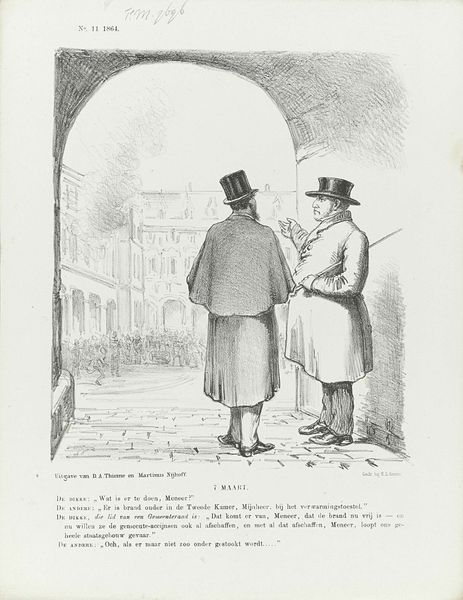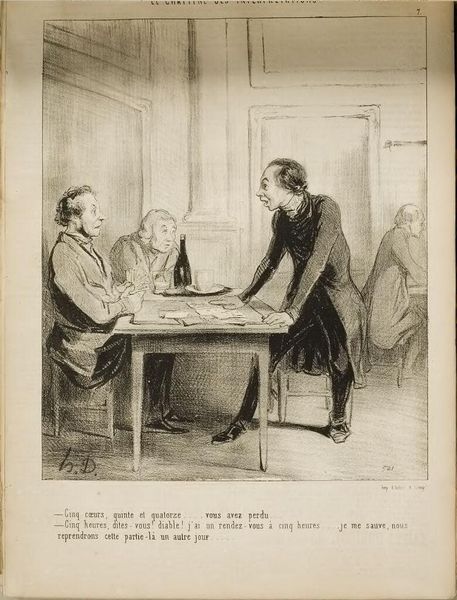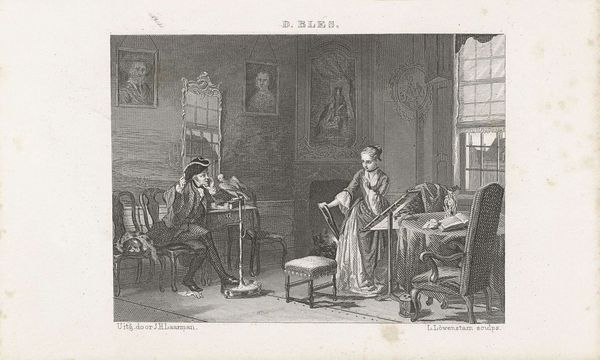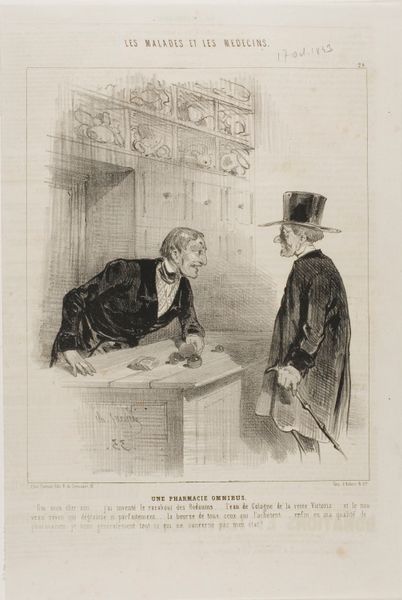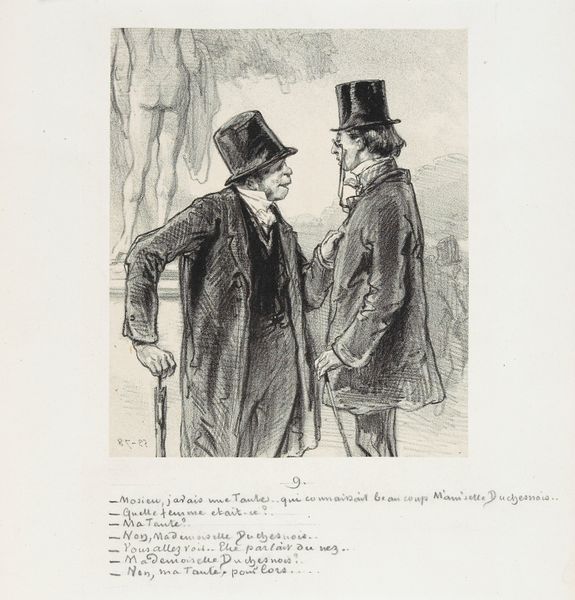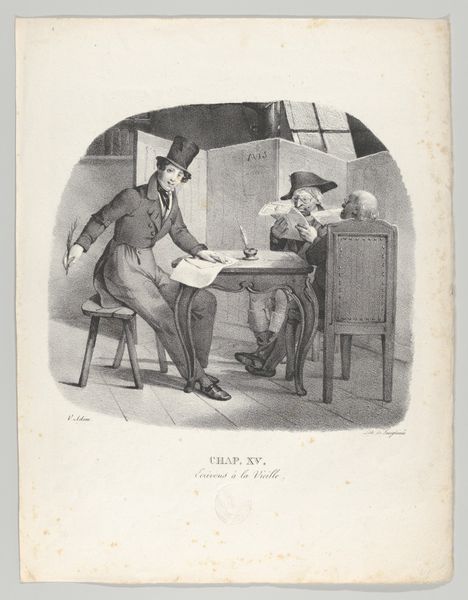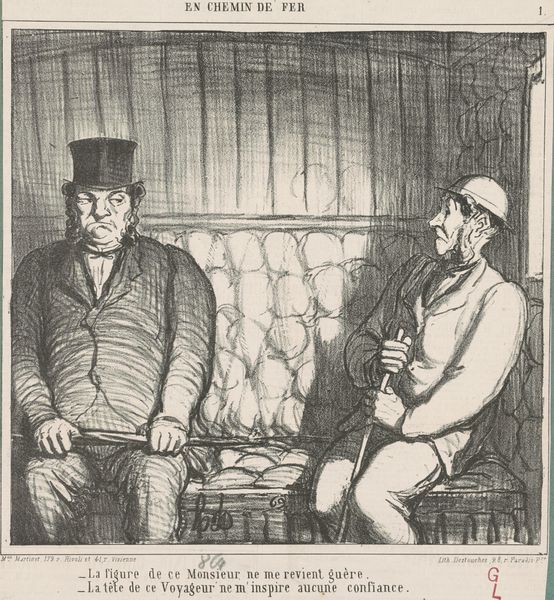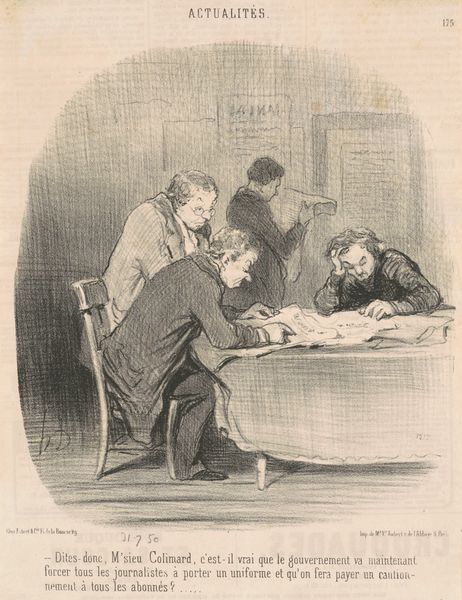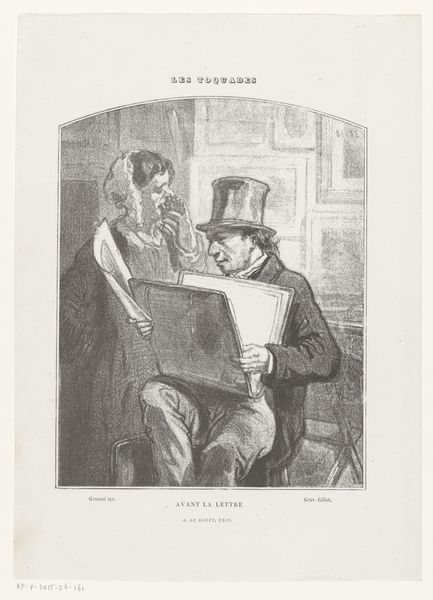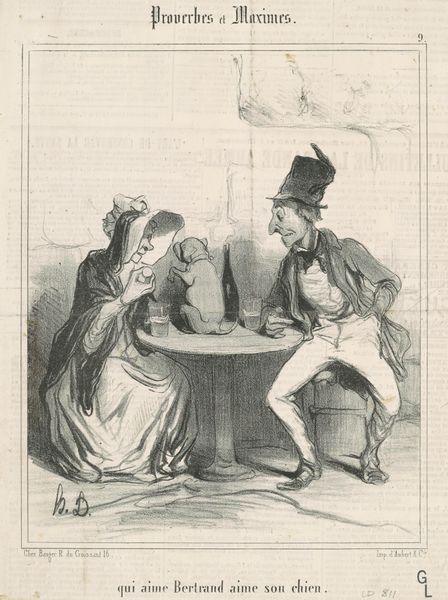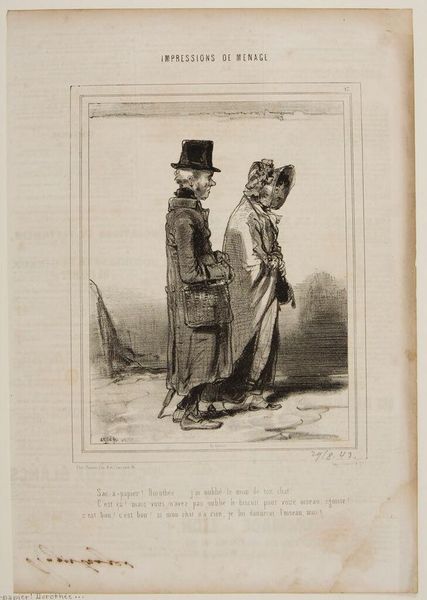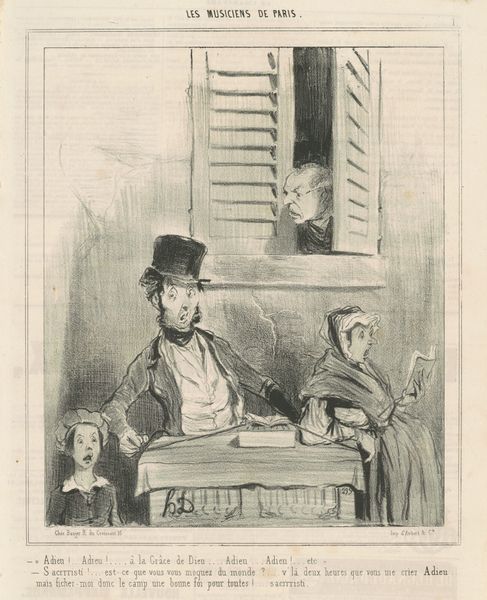
Spotprent op de verhoging van de belasting op jenever en suiker, 1863 1863
0:00
0:00
print, engraving
#
portrait
#
16_19th-century
# print
#
caricature
#
old engraving style
#
cityscape
#
genre-painting
#
engraving
#
realism
Dimensions: height 275 mm, width 215 mm
Copyright: Rijks Museum: Open Domain
Editor: Here we have "Spotprent op de verhoging van de belasting op jenever en suiker," a print made in 1863 by Johan Michaël Schmidt Crans. Looking at the figures, I'm struck by how still everything feels, almost like a stage scene. The composition seems very deliberate. What catches your eye? Curator: My initial focus is on the formal arrangement of elements within the pictorial space. Note how the stark lines of the table bisect the composition, creating distinct zones occupied by the two figures. The textures created by the engraving technique contribute to a certain flatness, a deliberate rejection of illusionistic depth. Consider the contrasting postures: one upright and seemingly complacent, the other slouched and contemplative. Editor: I hadn’t noticed the impact of the engraving technique on depth. It makes the figures appear almost pasted onto the background. What’s the effect of the differing postures? Curator: The posture is paramount. One figure's uprightness, accentuated by the hat, draws our attention to status and power, juxtaposed against the other's slump, suggestive of weariness or resignation. Notice also the window behind them: It allows for the inclusion of external elements while remaining visually integrated with the stark interior. The documents tacked to it become visual texture that works against creating illusionistic space. What, then, do you see as the crucial design component in this piece? Editor: I see what you mean about the tension between the figures and their contrast to the background. It's not just a political caricature; it’s also a really cleverly constructed image. I hadn’t thought about it in those terms before, I appreciate that insight. Curator: Considering only the inherent visual elements, we may analyze the choices regarding line, form and texture independent of their mimetic function or their overt socio-political content, no? We began with initial reactions, but now conclude with deeper awareness of visual and formal significance.
Comments
No comments
Be the first to comment and join the conversation on the ultimate creative platform.
